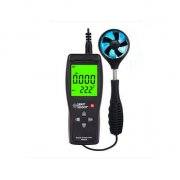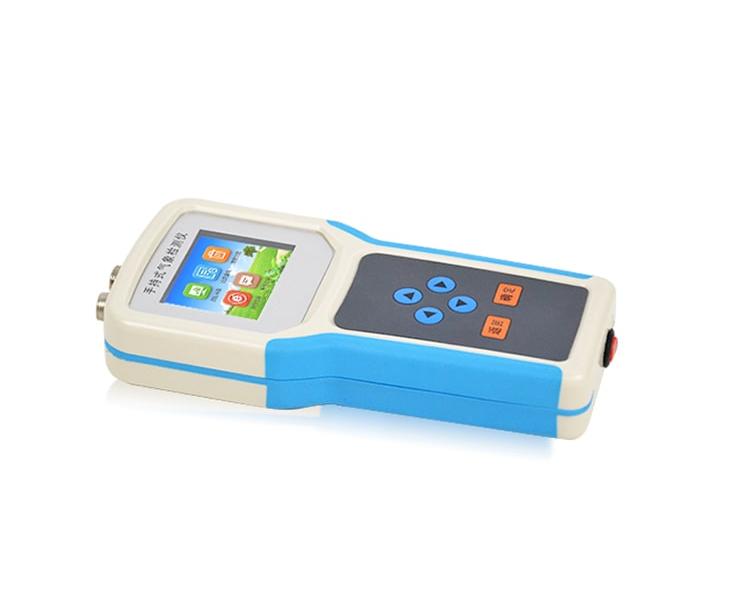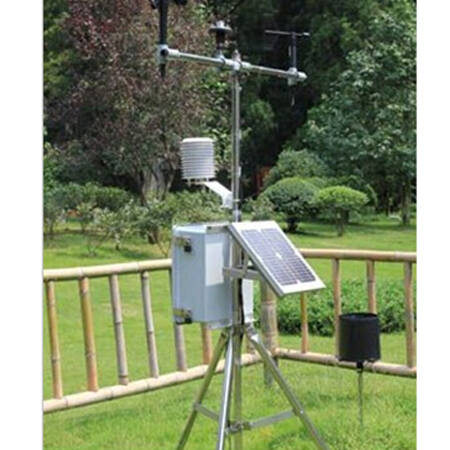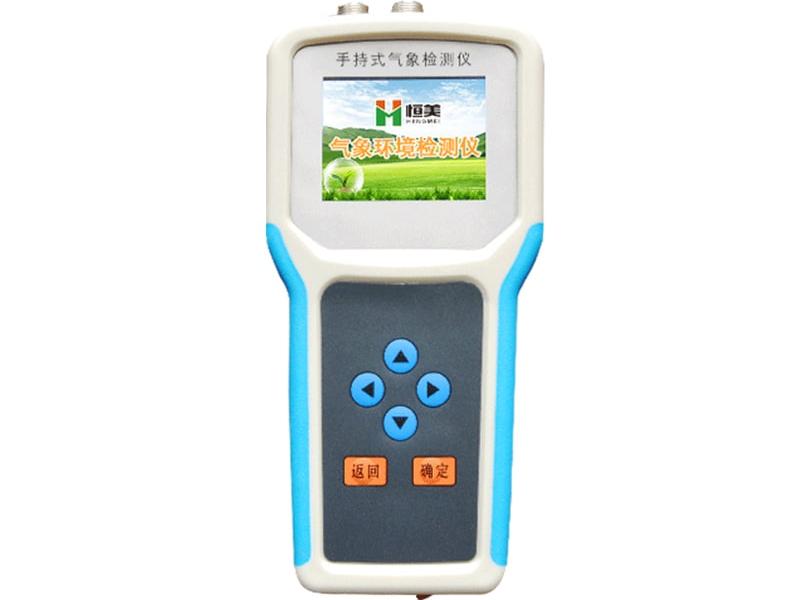Product Introduction:
Meteorological environmental data is an important indicator for determining solar power generation, and plays a decisive role in the quality of solar power generation; it also provides effective data guarantee for the design of solar power stations. The photovoltaic environment monitor is a standard environmental monitoring station designed and produced in accordance with the meteorological observation standards of the International Meteorological Organization WMO and the IEC (International Electrotechnical Commission) specifications. The equipment meets the national standards and meets the latest data requirements and logical correspondence of the photovoltaic power station reported to the province. It has the characteristics of stable performance, high detection accuracy, and unattended operation, which can meet the business requirements of professional photovoltaic environment observation.
Functional features:
1. Collector: It adopts industrial-grade processing chip and ABS shell, which is light, sturdy and beautiful as a whole. It has a 192*64 full-dot LCD display, which can complete graphic display or 12*4 Chinese character display (optional 7-inch LCD display screen), suitable for various harsh environments.
2. Fully automatic tracker: The tracking methods of the fully automatic solar tracker include sensor tracking method and solar trajectory tracking method. The sensor tracking method is to sample in real time through the photoelectric converter, calculate and analyze the changes in the intensity of the sun, and then drive the mechanical mechanism to achieve solar tracking. Make the direct radiation tracking measurement more accurate.
3. Sensors: various meteorological element sensors such as ambient temperature, humidity, wind speed, wind direction, air pressure, component temperature, direct radiation sensor, scattered radiation sensor, total radiation sensor, sunshine hours, etc. (optional according to needs).
4. With external USB storage expansion function.
5. Bracket: The surface of the main pole is treated with hot-dip galvanizing and electrostatic spraying, which has strong corrosion resistance and oxidation resistance.
6. 1 set of meteorological data analysis platform:
Data query function: support query, export and print functions of various real-time data and historical data in any time period.
Data statistics function: support single element statistics function: statistics of single element maximum, minimum and average values can be performed by year, month, day, hour, 10 minutes or any time period.
Data chart function: A real-time curve can be formed based on the collected data, and can be presented in an intuitive way such as a bar chart or pie chart.
Technical parameters:
Name Measurement range Accuracy Resolution
Ambient temperature -50~+100℃ ±0.1℃ 0.1℃
Relative humidity 0~100%RH ±2% RH 0.1%
Wind direction 0~360° (16 directions) ±2° 1°
Wind speed 0~70m/s ±(0.3+0.03V)m/s 0.1m/s
Atmospheric pressure 10~1100KPa ±0.12hPa 0.1KPa
Component temperature ﹣40~100℃ ±0.1℃ 0.1℃
Direct radiation 0~2000W/m2 Working table <5%; standard table <2% 7~14μV∕W.m-2
Scattered radiation 0~2000W/m² <±5%, usually ±3% 1 W/m²
Total radiation 0-2000w/m2 ±2%w/m2 1w/m2
Sunshine hours 0~24h ±2%h 0.1 h
Configuration can be expanded according to user needs: dew point temperature sensor, ultraviolet radiation sensor, photosynthetically active radiation sensor and other meteorological element sensors.
LED display screen (AC power supply) can be installed, the size is adjustable, real-time collected meteorological data and other set information.
Lightning protection system Lightning rod and accessories
Data acquisition instrument Data acquisition, storage, communication, analysis and other functions
Power supply system Mains/solar energy/battery/multi-power supply system optional
Communication system RS232/RS485, USB, wireless GPRS, Ethernet and other communication methods
Special bracket Install protective box, sensor, power supply, communication equipment, etc.
Typical applications:
1. Solar photovoltaic power generation, solar energy resource assessment
2. Solar energy system monitoring, atmospheric energy balance research
3. Calibration and verification of solar radiation data obtained by satellite inversion
4. Thermal stress research, heat exchange research, climate change research
5. Initial light resource estimation and processing of power stations, revenue assessment
Design implementation standards:
"Guide to Meteorological Instruments and Observation Methods" World Meteorological Organization (WMO) Commission for Instruments and Observation Methods (CIMO) and IEC (International Electrotechnical Commission)
State Grid Corporation Enterprise Standard Q/GDW 617-2011 "Technical Regulations for Photovoltaic Power Station Access to the Grid"
State Grid Corporation Enterprise Standard Q/GDW 618-2011 "Testing Procedures for Photovoltaic Power Station Access to the Grid"
"Technical Specifications for Acceptance of Grid-connected Photovoltaic Power Generation System Project"
"QX/T 61-2007 Ground Meteorological Observation Specifications"
"QX/T-2000Ⅱ Automatic Weather Station Industry Standard"
"QX/T74-2007 Technical Specifications for Meteorological Observation and Data Review and Correction of Wind Farms"



 Current
Location:
Current
Location: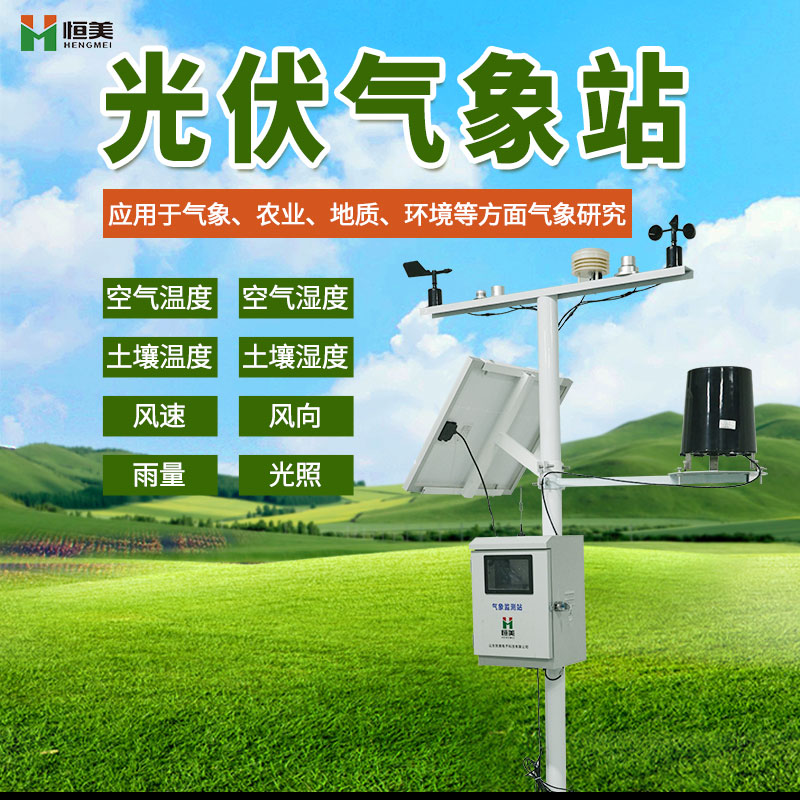
 +86 17853698681
+86 17853698681 WhatsApp
WhatsApp Product Details
Product Details Related Products
Related Products